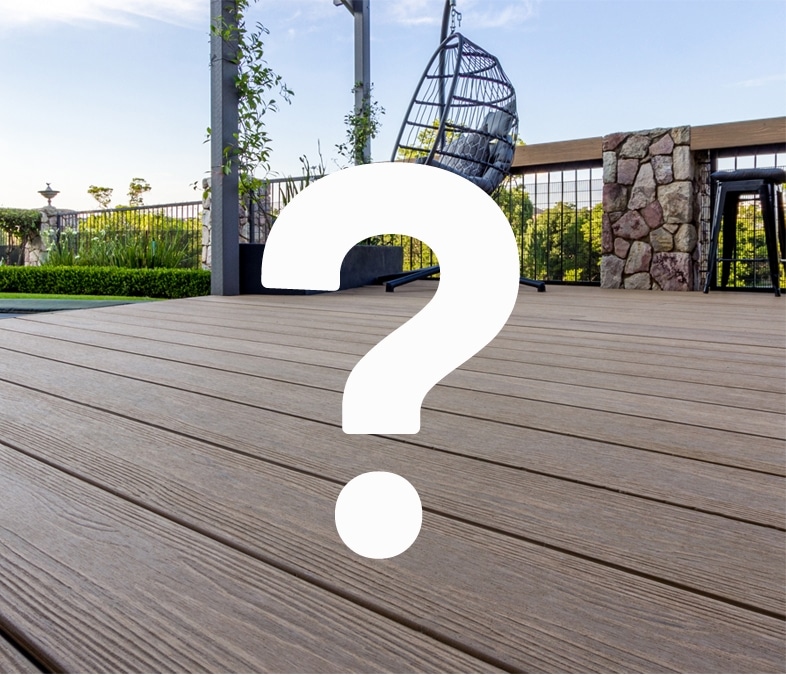What Is Composite
That’s why we’ve outlined the basics of what composite is, how it compares to wood, its advantages, disadvantages, designs, and a breakdown of what those keywords, like “low-maintenance” and “eco-friendly”, really mean – as well as the long-term costs and savings of composite.
HOW IT’S MADE

TYPES OF COMPOSITE
Composite decking comes in three main compositions: WPC, BPC, and PVC. While all three types provide certain advantages over traditional timber decking, each type also offers unique additional benefits. Familiarising yourself with the basics of the types of composite available will help you better navigate and compare specific brands and boards as you get closer to choosing the best decking material for your outdoor space.



CAPPED VS UNCAPPED COMPOSITE


COMPOSITE SHAPES

HOLLOW

I-SERIES

SOLID
Composite boards are designed in several styles. Hollow boards use less material, making them lighter weight and easier to transport. However, their hollow chambers must be carefully covered by trim or fascia boards to keep out moisture and debris. Solid boards are heavier and hardier, with greater span capabilities and fewer installation considerations than hollow boards, and a longer lifespan. Cutting-edge innovation now blends the advantages of hollow and solid boards with a revolutionary I-beam shaped board. This I-Series composite line by Eva-Last is ultra-lightweight, free of any potential moisture issues, and offers the span capabilities and stiffness of much heavier boards.
Note: Each Eva-Last decking technology uses its own unique methods and manufacturing techniques in its creation. The process above details the general outline and is not specific to any one brand.
Eva-Last has been at the forefront of the green building industry since its inception in 2007. We are dedicated to consistently improving how we serve the environment and our clients. From the recycled and renewable raw ingredients we use to create our products, to the solar power we harness to manufacture, we are proud to offer holistically sustainable building products.
Low invironmental impact
When you choose Eva-Last composite decking, you’re choosing the best solution for both you and the environment. Eva-Last products are the low-maintenance, reliable alternative to wood that consistently outperform timber and other composite materials. They’re also the environmentally friendly material choice that is gentler on the Earth.

BAMBOO WASTES LESS & PROVIDES MORE
Eva-Last is a leader in bamboo composite production and innovation. Bamboo is one of Mother Nature’s best kept secrets. It can grow up to 50 times faster than timber and releases 35 percent more oxygen into our air than most hardwood trees. It can be made into composite with only 2 percent wastage (compared to over 80 percent wastage with timber), and is naturally antibacterial. Eva-Last uses bamboo to create composite that is better performing and better for the earth.

USE OF RECYCLED PLASTIC
Eva-Last is committed to using only recycled plastics instead of virgin plastics. In 2020 alone that added up to over 26 000 tons of plastic reused instead of being dumped into landfills. Recycling one ton of plastic results in carbon dioxide savings of approximately 0.73 tons – the same as travelling 4000 km in a car.

SOLAR POWERED EXTRUSION LINES
FOLLOW US
COMPOSITE PRODUCT CATEGORIES
Find out which of our internationally renowned Eva-Last composite ranges best suits your needs and your style.

PRODUCT BROCHURE
Find out more about the complete Eva-Last composite product offering and be one step closer to making your dream space a reality.

HAVE A QUESTION?
Our Eva-Last representatives are experts in composite. Browse our FAQs or contact us directly for help with your composite queries.









